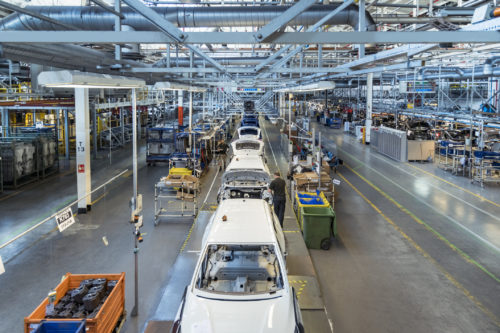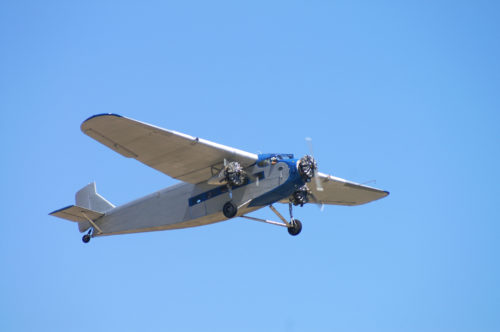Engineer’s Day: Celebrating The Brains Behind Marvels That Are Ford Cars
Henry Ford defined success as “doing more for the world than the world does for you”. And since its foundation in 1903, Ford Motor Company has lived up to that aim – by pioneering automobile innovations to make driving a remarkable experience for everyone.
Since the unveiling of the Quadricycle, the first automobile designed and driven by the man himself – Henry Ford – in the 19th century to modern-day Ford cars packed with advanced technology features, the company has been committed to engineering the very best vehicles. So, as India celebrates Engineers Day on September 15th, the birth anniversary of M. Visvesvaraya, let’s take a look at how the Ford brought several automobile engineering marvels to the world.
Moving Assembly Line (1913)

It all started with the Ford Model T – which was considered the 20th century’s most “influential car”. Henry Ford pioneered the concept of the moving assembly line for the Ford Model T, which made this iconic car affordable to the masses. It also changed the automotive landscape in the then America, and later, the world. Before the assembly line, cars were built one at a time, with long waiting periods for delivery and high sticker prices. In a moving assembly line, the car moves on a conveyor belt and is fitted with parts at different stations, making the process much smoother and quicker.
In 1908, the Ford Model T sold for $825 and by 1925, thanks to the more efficient Moving Assembly line, it only sold for only $260, making the car more affordable to individuals everywhere. Most especially, it allowed employees of Ford to be able to have a better life and to be able to afford the product that they built.
Over time, the assembly line method crossed over to other industries such as transportation, meatpacking, electrical goods etc. And when it comes to cars, the credit for consistent quality, low delivery times and competitive pricing go to none other than the assembly line.
Passenger Airliner (1926)

Henry Ford didn’t want the freedom of mobility to be limited to cars alone. Driven by this vision, Ford Motor Company in 1926 started producing the Ford Tri-Motor aircraft, the first successful US-based passenger airliner. It consisted of an all-metal body and was capable of carrying up to 12 passengers in an enclosed cabin, both relatively new concepts at the time. The Tri-Motor could also be converted to a cargo plane and was used in the military as well. Now you know just how and why your Ford Endeavour has the best-in-class aerodynamic design.
Legendary Ford V8 Engine (1932)

If you are a car enthusiast, you definitely know of the V8 engine – an eight-cylinder piston engine in which the cylinders are arranged in a V and share a single crankshaft. The V8 gained popularity as it was lightweight, compact, produced more power and was packed with outstanding horsepower and torque features. Thanks to a bent for innovation, engineers at Ford could produce a V8 engine that was also inexpensive. IN 1932, a Ford V8 sold for USD 460 (only $10 more than a Model B with four cylinders) and had 50 per cent more power. The V8 engine powers one of the most iconic automotive nameplates in the world, the Ford Mustang. This streak of innovation continues till date and be it the three-cylinder petrol engine family, the trusted 1.5L diesel engine or the 2.0L diesel motor that powers the Endeavour, all Ford engines have set new benchmarks in fun-of-driving, reliability and efficiency.
Anti-Lock Braking System (1960 onward)

Anti-lock brakes are the first line of defence when trying to prevent a car crash. Since they prevent the wheels from locking up, you retain steering control and manoeuvre through obstacles, rather than slide right into them due to locked wheels. However, what not many may know is that the Ford Zodiac was one of the first cars to have ABS (anti-lock braking system) way back in the 1960s. By 1970, Ford installed ‘Sure-track’ an anti-lock braking system to the rear axle of Lincoln Continentals as an option. Today’s ABS sensors that are installed in all Ford cars, not only help in avoiding skids, but also keep the wheels from spinning under acceleration by feeding the required data to the traction control system. What’s more, the ABS in Ford Endeavour has been tuned for optimised performance across different terrain (rock, sand, snow), depending on the mode selected on the Terrain Management System.
Engine Control Unit (1975)

Have you ever wondered how your Ford car manages to run perfectly well, whether it is the height of summer in Rajasthan, the middle of the monsoon in Kerala, or the biting cold winters in the Himalayas? The credit goes to the ECU, or Engine Control Unit – a computer that makes many calculations every second based on sensors around the engine to help the car do its job without hiccups. The ECU orders the engine to change things like fuel injection, ignition timing and the amount of fuel that goes into the cylinder, depending on how loaded the car is, whether it is going uphill or downhill, the gear selected, throttle position, etc. Ford pioneered the ECU with its Toshiba-developed Electronic Engine Control that went into production in 1975. Today, you can find an advanced version of the ECU in every single Ford car, which is what allows them to have class-leading power and efficiency figures.
High-Tech Fuel System (1980 Onward)

Ever since the invention of the internal combustion engine, carburetors have been used to deliver fuel to the engine. But the ECU opened up new avenues to manufacturers like Ford, allowing them to explore new ways to extract more power and lower emissions. One of these technologies was fuel injection; Ford had Central Fuel Injection on some models in the 1980s. Besides, the additional capabilities of the third-generation EEC (Electronic Engine Control) allowed the computer to take control of fuel delivery. Since then, fuel injection has only grown by leaps and bounds.
Ford’s petrol engines use a variety of fuel delivery systems to ensure that neither performance nor efficiency are compromised. Likewise, the diesel engine, with its direct injection systems offer emissions that are compliant with the BS-VI norms that are currently in effect in India. In addition to this, all Ford cars ranging from the popular hatchback – the Ford Figo to the full-size SUV – the Ford Endeavour are BS-VI compliant. And thanks to the fuel injection system, your Ford Freestyle, Ford EcoSport and Ford Endeavour enables you to climb all the way up to Ladakh without having to worry about altitude changes impacting the car. No matter which Ford car you choose to own, know that it is the result of over four decades of research and development in fuel injection systems!
Ford engineers have also contributed significantly towards car safety by conducting extensive research and development on airbags and enhancing overall car safety. Ford was the first to make several active and passive safety features standard, including airbags and seatbelts.
We can rightly say that the automobile industry today would have been very different if not for the technology and production breakthroughs by Ford Motor Company. And a large part of this success goes to the engineers that continually strive to make every car model better than the one before. So, this Engineers Day, join us in saluting the engineers across the world for their relentless work in the field.
Subscribe to our newsletter
Subscribe to our newsletter to stay upto date with latest news, offers and much more



